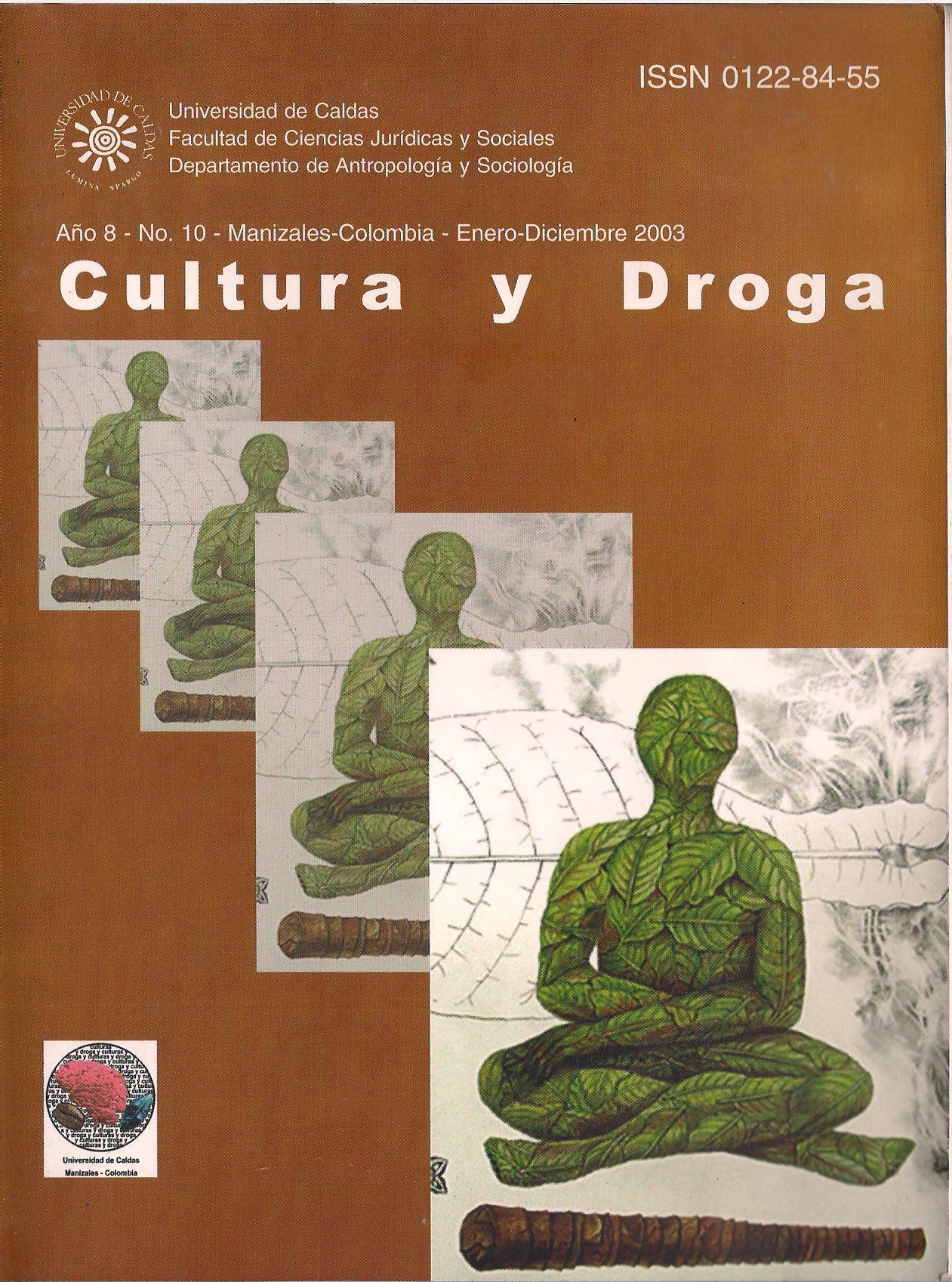Authors
Abstract
Abstract: Migration and drug smuggling are currently two crucial processes for Colombian society in general and for some regions in particular. Internal and external migration has a long history, having multiple destinations abroad though highly selective in their origins. The coffee-growing region has had a high proportion of migration processes in the country, both inside and outside; the latest has reached historic proportion lately, and its effects are evident. Drug smuggling, on the other hand, has been one of the most desolating calamities which have hit Colombia in the last three decades, altering not only the economy but also the social structures, the habits and cultural speeches, relations of power, etc. At the beginnings of the 21st century, both people and drugs export have become two of the most notorious national connections of global economy. This paper mentions some relationships between those processes as well as their connections and effect, in one of the regions which was, until recently, the most prosperous and stable of the country.
Keywords
References
COLLIER, Michael y GAMARRA Eduardo A., The colombian diaspora in south Florida – a report of the colombian studies Institute’s Colombian Diaspora Project, Miami: Latin American and Caribbean Center, Florida International University , 2001.
DEPARTAMENTO ADMINISTRATIVO NACIONAL DE ESTADÍSTICA – DANE. XVI Censo Nacional de Población y V de Vivienda. Resultados impresos y en archivos magnéticos, 1993.
EMBAJADA DE COLOMBIA EN ESPAÑA. Encuesta a colombianos residentes en España. [En línea] http://eltiempo.terra.com.co/inte/COLOMBESP/COLESP_NOTI/noticias/ARCHIVO/ARCHIVO-1182986-0.ppt. Julio
22.
MINISTERIO DE RELACIONES EXTERIORES. Censo de connacionales. Anexo A oficio CPR/3784. Bogotá: 2003b.
CORPORACIÓN ALMA MATER et. al., Ecorregión Eje Cafetero. Un territorio de oportunidades. Pereira: Alma Mater, 2002.
CORPORACIÓN ALMA MATER Y GOBERNACIÓN DE RISARALDA. Conflicto armado en la ecorregión Eje Cafetero. Pereira: Alma Mater (en prensa), 2003.
EL TIEMPO. Editoriales; Edición febrero 2 de 2002. Bogotá, 2002
ESPAÑA, INSTITUTO NACIONAL DE ESTADÍSTICA INE. Notas de Prensa. [en línea] 5 de agosto de 2003, www.ine.es/prensa/prensa.htm.
FUKUYAMA, Francis, Trust: the social virtues and the creation of prosperity. Free Press, 1995.
GÓMEZ, Alcides y DÍAZ, Luz Marina, La moderna esclavitud: los indocumentados en Venezuela. Bogotá: Oveja Negra, 1983.
GUARNIZO, Luis Eduardo y DÍAZ, Luz Marina, La migración internacional: una perspec- tiva colombiana. En PORTES, Alejandro; GUARNIZO, Luis y LANDOLT, Patricia (coordinado- res). La Globalización desde abajo: transnacionalismo inmigrante y desarrollo, la expe- riencia de Estados Unidos y América Latina. Mexico: FLACSO, 2003. p. 277-313. 1999, Transnational migration: a view from Colombia. Ethnic and racial studies.1999 : 397-421.
GUARNIZO, Luis Eduardo; SÁNCHEZ, Arturo Ignacio y ROACH, Elizabeth M., Mistrust, Fragmented Solidarity, and Transnational Migration: Colombians in New York City and Los Angeles. Ethnic and Racial Studies, 1999. 22(2): 367-396.
GUEVARA, Luz M. et. al. Microtráfico postal de estupefacientes en Colombia, Bogotá. DNE – Escuela Nacional de Policía General Santander 2002.
HOYOS, Pedro F., Café, caminos de herradura y el poblamiento de Caldas. Bogotá: TM Editores, 2001.
MASSEY Douglas S. et. al. Return to aztlán: the social process of international migration from western Mexico. Berkeley: University of California Press, 1987.
MEJÍA, William y MARTÍNEZ, María G., Prostitución femenina, negocio y marginalidad. reali- dades y alternativas en el Eje Cafetero Colombiano. Bogotá: Solidaridad Internacional, 2003.
MEJÍA, William, et. al. Las “mulas” del Eje Cafetero, una aproximación multidisciplinaria al fenómeno de los correos humanos del narcotráfico. Pereira: Corporación Alma Mater – UNODC, 2002.
MELO, Jorge Orlando, Algunas consideraciones globales sobre “modernidad» y «mo- dernización» en el caso colombiano. [En línea] Biblioteca Virtual Luis Ángel Arango, http:// www.lablaa.org/blaavirtual/letra-m2/melo/modernidad.htm
NACIONES UNIDAS et. al., Informe de desarrollo humano del Eje Cafetero. Manizales (en prensa) 2003.
NACIONES UNIDAS, CONSEJO ECONÓMICO Y SOCIAL, Situación mundial del tráfico ilícito de drogas y medidas adoptadas por los órganos subsidiarios de la Comisión de estupefacientes. Informe de la Secretaría. E/CN.7/2002/4, 2002.
PORTES, Alejandro y BACH Robert L., Latin journey: cuban and mexican Immigrants in the United States. Berkeley: University of California Press, 1985.
PORTES, Alejandro y RUMBAUT, Rubén, Immigrant America: a portrait. Berkeley: University of California Press, 1996.
PUTNAM, Robert D., Bowling alone: America’s declining social capital En: Journal of Democracy 6: 65-78.
SAFFORD, Frank y PALACIOS, Marco. Colombia: fragmented land, divided society. Nue- va York. Oxford: Oxford University Press, 2002.
SAMPER, José M., Ensayo sobre las revoluciones políticas y la condición social de las repúblicas colombianas (hispano–americanas); con un Apéndice sobre la Orografía y la Población de la Confederación Granadina, Capítulo 5, [En línea] Biblioteca Virtual Luis Ángel Arango, http://www.lablaa.org/blaavirtual/letra-r/revpol/cap5-1.htm#1.
SANTA, Eduardo. La colonización antioqueña, una empresa de caminos. Bogotá: TM Edi- tores, 1993.
SEPÚLVEDA, Jaime. Caldas, cómo se formó, cómo se fragmentó. Ediciones del Común, 1997. U.S. Census Bureau, 2000, Census 2000. [En línea] http://www.census.gov/main/www/ cen 2000.html.
___________2002, American FactFinder. Detailed Tables. 2002 American Community Survey Summary Tables. PCT006. HISPANIC OR LATINO BY SPECIFIC ORIGIN - Universe: TOTAL POPULATION, [En línea] http://factfinder.census.gov/.
VILLEGAS, Jorge, La colonización de vertiente del siglo XIX en Colombia. En: Estudios Rurales Latinoamericanos. 1978V1, No.2: 101-147.

 PDF (Español)
PDF (Español)
 FLIP
FLIP

















